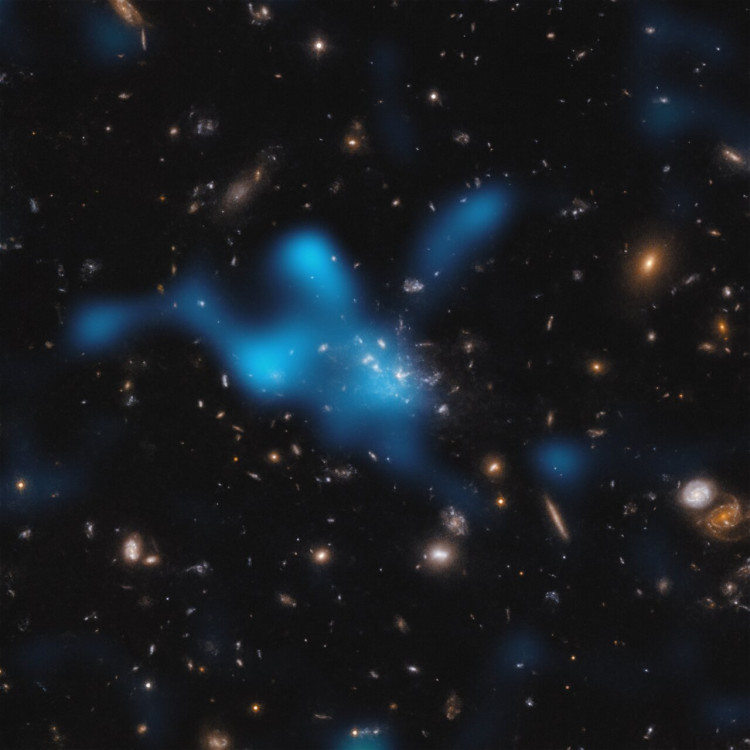Clusters can contain thousands of galaxies. Between the galaxies is the so-called intracluster medium. That hot gas has more mass than the galaxies themselves. The presence of hot gas in clusters-in-formation has been predicted by cosmological simulations for more than a decade, but observations that could confirm the prediction were lacking.
Research led by Luca di Mascolo (University of Trieste, Italy) on the Spiderweb protocluster now clearly shows that there must be hot gas between the galaxies. The Spiderweb cluster is located more than 10 billion light years from Earth in the universe that was then only 3 billion years young.
Text continues after the video.
Using ALMA, astronomers have discovered a large reservoir of hot gas in a still-forming cluster of galaxies. (c) ESO [YouTube | various formats]
Shadow reveals mass and shape
The astronomers discovered the intracluster medium through the so-called thermal Sunayev-Zeldovich effect. This effect occurs when light from the cosmic background radiation - the residual radiation from the Big Bang - passes through the intracluster medium. When interacting with the fast-moving electrons in the hot gas, this light gains a little energy and changes its color, or wavelength, slightly. At certain wavelengths, this causes a cluster of galaxies to cast a sort of shadow over the cosmic background radiation.
By measuring these shadows using the telescopes of the ALMA observatory, the astronomers were not only able to deduce the existence of the hot gas, but also to estimate its mass and map its shape.
The researchers found that the Spiderweb protocluster contains a huge reservoir of hot gas with a temperature of several tens of millions of degrees Celsius. The mass of the hot gas now detected is thousands of times larger than the cold cold gas previously discovered. The discovery strengthens the expectation that the Spider's Web protocluster will have grown into a heavy cluster of galaxies in about 10 billion years.
Forty years
Leiden professor emeritus George Miley is listed as co-author on the publication about the Spider Web Cluster. "More than forty years ago, we first observed the iconic cluster with the Westerbork telescope. Later, Hubble showed us its spiderweb-like appearance. And now we have discovered the hot gas with ALMA."
Miley adds, "And it's not done yet. The LOFAR telescopes are currently scanning the sky looking for even more Spider Web cluster-like objects. I expect that at some point we will discover when the first clusters formed."
Scientific article
Forming intracluster gas in a galaxy protocluster at a redshift of 2.16. By: Luca Di Mascolo et al. In: Nature, 29 maart 2023. [original | preprint (pdf)]
 This image shows the protocluster around the Spiderweb galaxy (officially known as MRC 1138-262), seen at a time when the universe was only three billion years old. Most of the mass in the protocluster is not in the galaxies shown in the center of the image, but in the gas known as the intracluster medium. This hot gas is shown as a blue cloud. (c) ESO/Di Mascolo et al.; HST: H. Ford [large version | various resolutions]
This image shows the protocluster around the Spiderweb galaxy (officially known as MRC 1138-262), seen at a time when the universe was only three billion years old. Most of the mass in the protocluster is not in the galaxies shown in the center of the image, but in the gas known as the intracluster medium. This hot gas is shown as a blue cloud. (c) ESO/Di Mascolo et al.; HST: H. Ford [large version | various resolutions]
